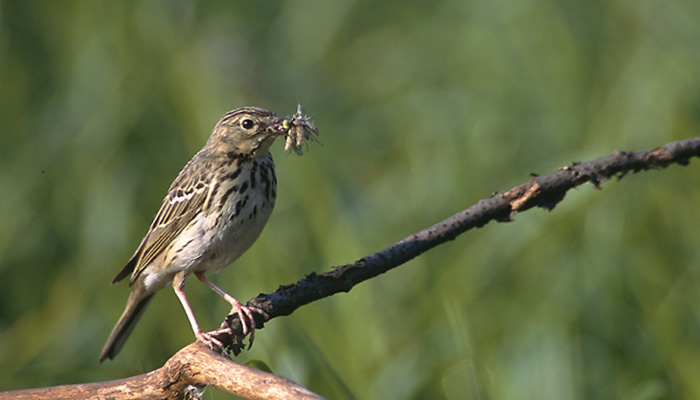
English: Tree Pipit, Forest Pipit, Eurasian Tree
Pipit
Russian: Лесной конёк
Mongolian:
Ойн шийхнүүхэй
German: Baumpieper
French: Pipit des arbres
Japanese: ヨーロッパビンズイ (Yoroppa-binzui)
Body length: 14-15 cm
Wing span: 25-27 cm
Passage migrant
Breeding season: May-August
Egg number: 4-6
Egg colour: Buffish ground
colours with dark or reddish-brown speckles, spots.
Brood: 1 per year
Food: Invertebrates and their
larvae and seeds of various plants.
Status: Rare species. According to the IUCN Red List categories and criteria,
the species evaluated as- Near Threatened.
Distribution and Range: The species breeds in Western Europe, Russian Federation, Asian
Mountain ranges from Turkey to Himalayas, Eastern Tien Shan. Winters in Western
Europe, Africa and Southeast Asia. In Mongolia: Khovsgol, Khangai, Khentii,
Khovd, Bulgan, Orkhon, Selenge, Onon, Balj, Kherlen, Ulz, and Khalkh River
along riverbank forested areas.
Habitat: Forest steppe zone deciduous forest edges, deciduous meadows,
river valley deciduous forests, and mountain steppes with patchy woodland.
Population and Threats: Population abundance, threats have not been assessed. Endangered
due forest resources degradation caused by forest fires, tree logging thus
destroying breeding and nesting habitats.
Conservation Measures: Included as Rare animal in the Annex to the Mongolian Government
Resolution #7 (2012). Majority of the distribution area is included within the
NSPAN.
Further actions: Protect the distribution area forest resources, create and
implement a conservation management plan for habitat areas by assessing
threats, reproduction ecology and biology, raise public awareness.